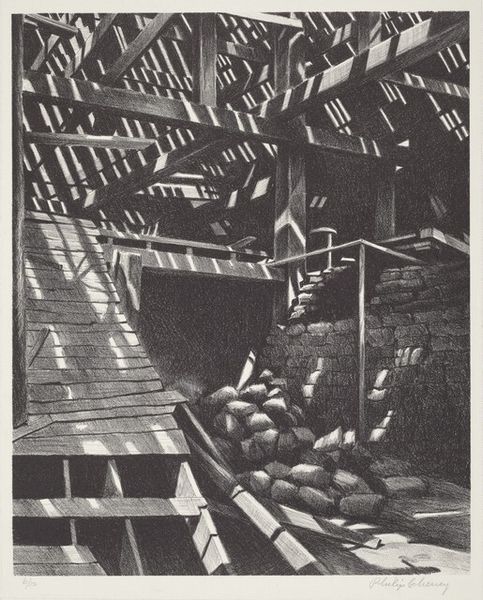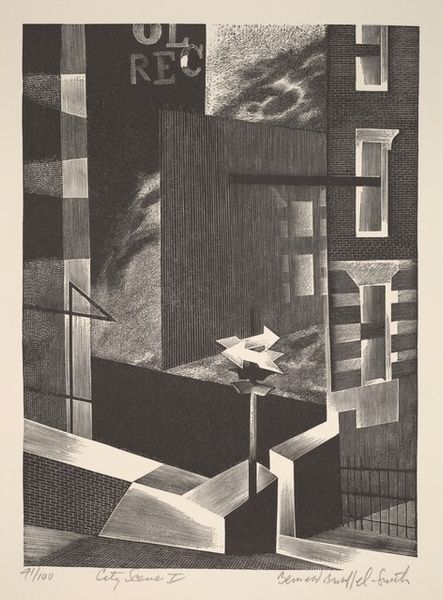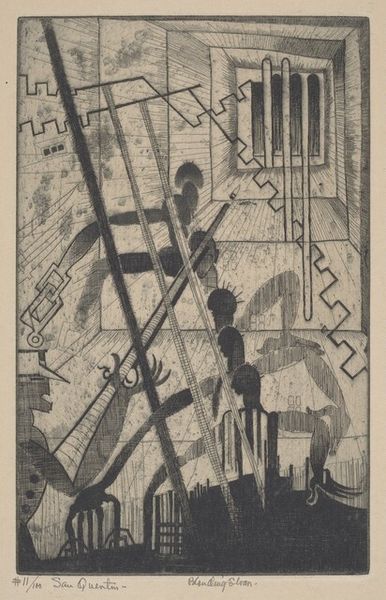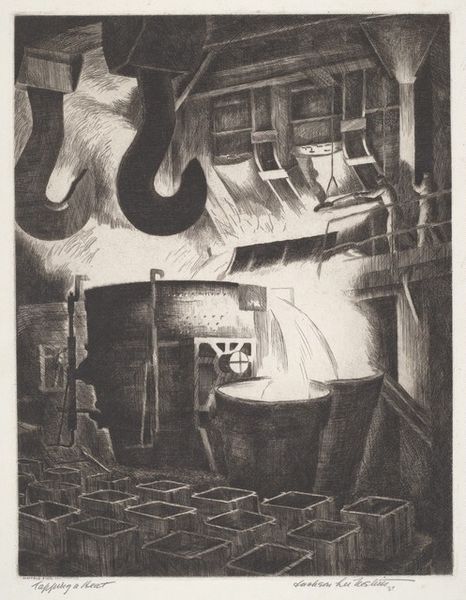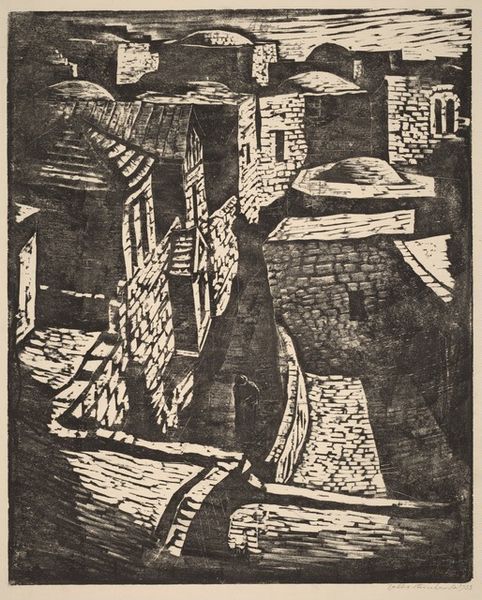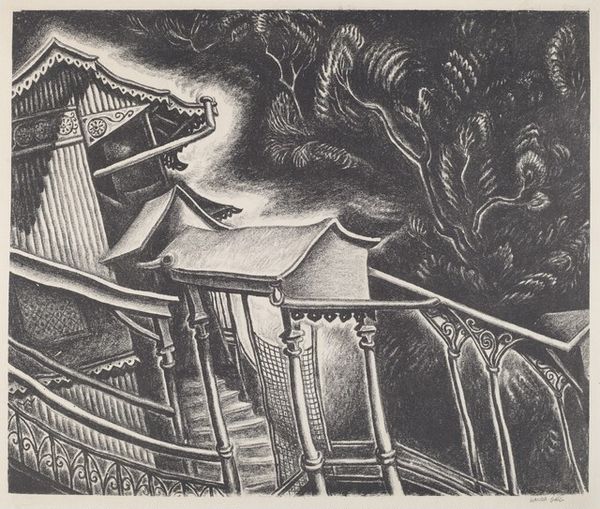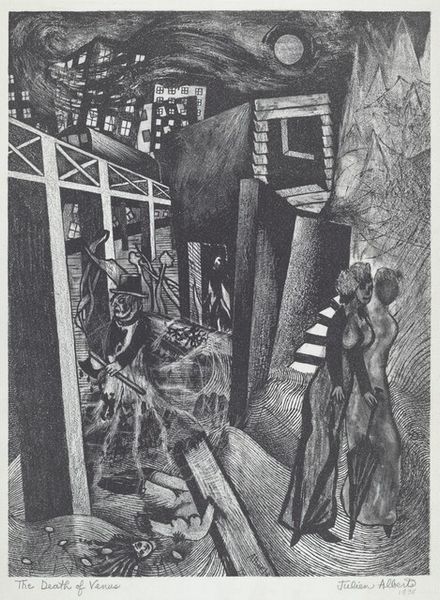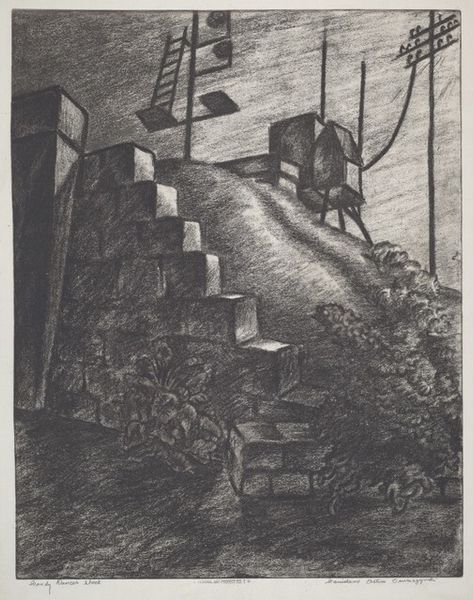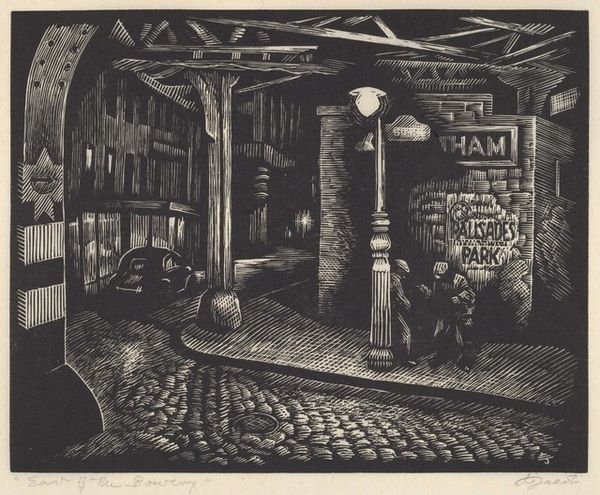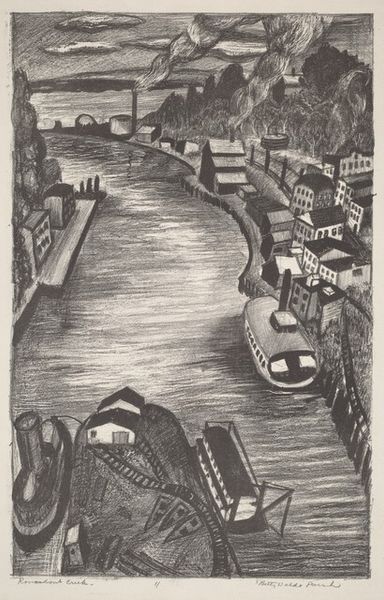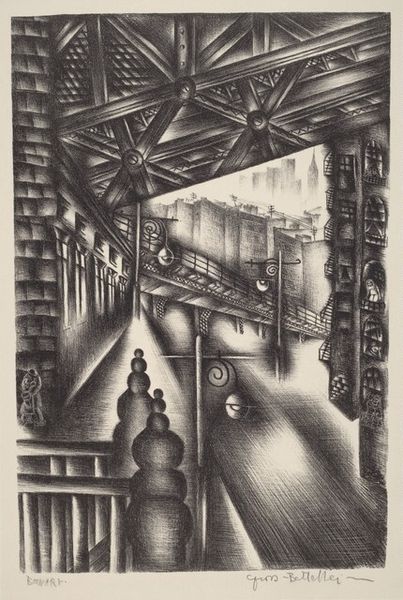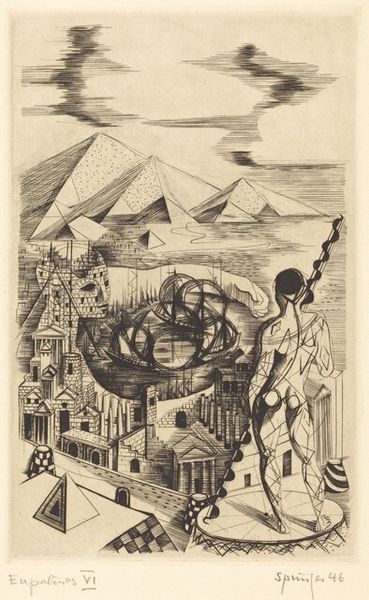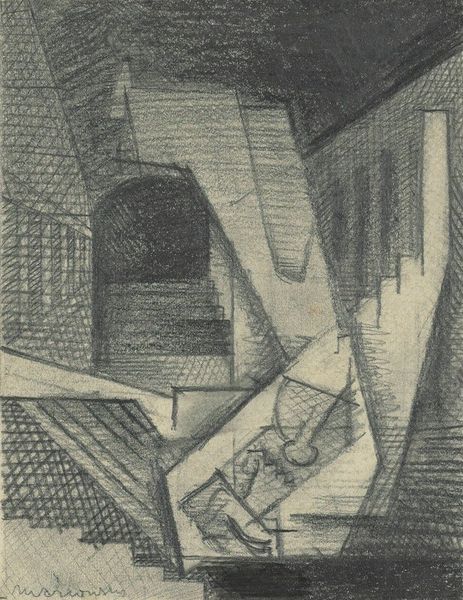
graphic-art, print, woodblock-print
#
graphic-art
# print
#
woodblock-print
#
geometric
#
cityscape
#
modernism
Copyright: National Gallery of Art: CC0 1.0
Curator: Looking at M.C. Escher's "Oude Kerk" from 1939, a woodblock print, one is immediately struck by the stark contrast. What’s your take on its mood? Editor: It's a bird's-eye view steeped in isolation. The imposing architecture almost cages the ordinary lives beneath, creating a rather unsettling surveillance vibe. Curator: Let’s consider the labor involved here. A woodblock print necessitates meticulous carving—essentially, removing material. How do you see the medium informing the message? The removal of the wood from the block to reveal an image in such stark, contrasting ways to create it, it is an extremely demanding process, is it not? Editor: Absolutely. And beyond the painstaking labor, I see Escher playing with themes of control and perspective. He positions the viewer high above, almost like a god-like observer gazing down upon this Dutch town. Curator: The technical precision is undeniably impressive, but let's not overlook the materials themselves. The choice of wood imparts a unique texture—a certain tactile quality. Consider also the ink; its viscosity and absorption shape the final product. Editor: That interplay between material and image subtly critiques systems of power and representation, but what resonates with me is how it echoes the social climate of 1939. The looming architecture and constricted views feel symbolic of pre-war anxieties, this idea of constant monitoring and impending threat to individual agency in such environments. Curator: I understand your interpretation, but isn't that reading current political concepts backwards onto the past? However, in considering these issues in retrospect, the process itself has to be acknowledged and interpreted because Escher, as with any artist, manipulates material reality. In particular, how much black ink should sit next to each white, uninked carve; how precisely aligned must the block be? That affects how one interprets "reality". Editor: It’s both. We engage with the artwork from our present moment to try to build our perception on this vision. These readings help us not only decode Escher, but the looming world. Perhaps even now as then we have limited means and insight into this vision. It leaves you wanting to understand both Escher’s mindset and his physical interaction to create the image, I agree with you there. Curator: Ultimately, what strikes me is Escher's almost obsessive attention to detail and process. Every line serves a purpose—to create depth, contrast, and this intriguing play of perspective. This focus on means of production as the source of all truth makes this graphic truly modern. Editor: And for me, it's that uneasy marriage of control and observation that keeps drawing me back. The print raises profound questions about who watches whom, and the implications of power dynamics in everyday urban environments.
Comments
No comments
Be the first to comment and join the conversation on the ultimate creative platform.
